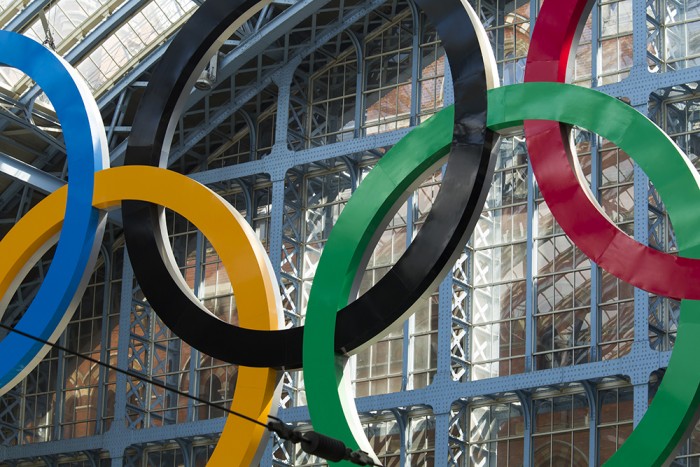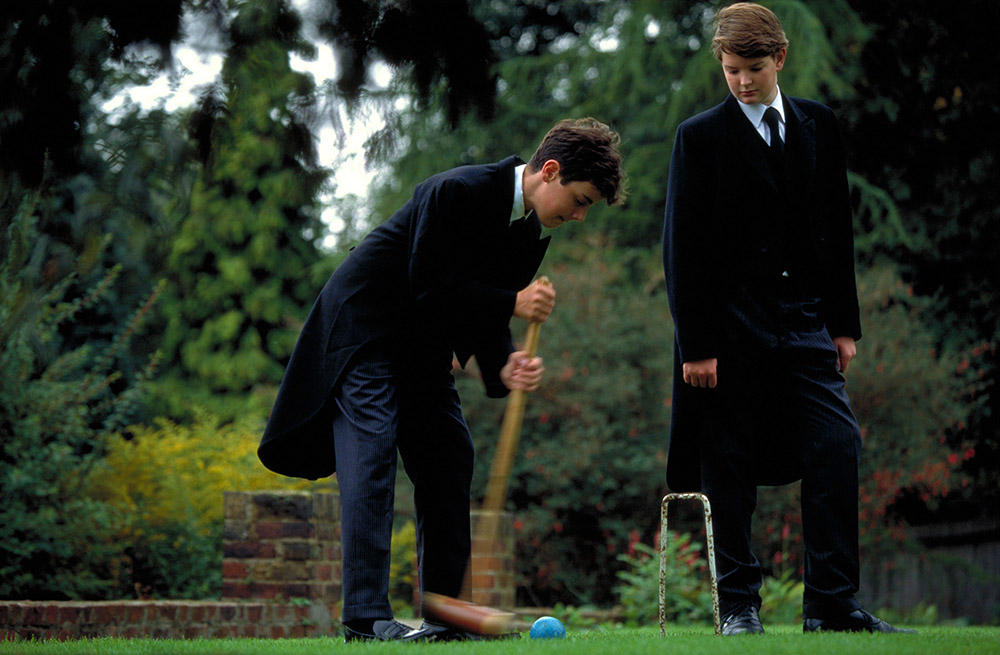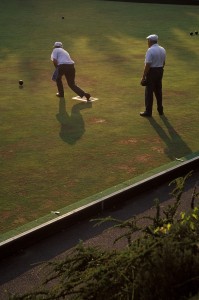Jolly Good Sports

With the Olympics under way, Jeremy Jenkins celebrates Britain’s prowess at inventing sports, tracing the origins of tennis, cricket, badminton… and whiff-whaff
If you can dream—and not make
dreams your master;If you can think—and not make
thoughts your aim;If you can meet with Triumph and Disaster
And treat those two impostors just the same…
These words to the Rudyard Kipling poem If hang above the players’ entrance at Wimbledon’s Centre Court, a salient and timely reminder to the titans about to slog out on that hallowed patch of manicured grass that there is more to victory than just winning. They are also strikingly British. “It’s not the winning, it’s the taking part” is not just a national axiom; it is instilled in the British psyche. Which is, conversely, why the Brits have so long been devotees of all manner of sports from the weird to the wonderful, as well as being exporters of them to the rest of the world, particularly during colonial rule. That abounding back-slapping, hand-shaking, jolly-hockeysticks spirit of fair play has not only engendered a hale and hearty sporting attitude to games but a healthily prolific attitude to inventing them. These are just some of our favourites.
Cricket

If you thought the rules of cricket were hard to grasp, roll back the years a few centuries and they were positively Byzantine; every village had its own version, all with local conventions. The royals were not impartial either: there is a reference to a game akin to cricket in the household accounts of King Edward I in 1300; King Edward II was not unfamiliar with a bat; and even that consummate repressor of fun, Oliver Cromwell, is said to have played. The earliest written reference comes in 1598, at a court case in Surrey, which mentions “creckett” having been played on common ground 50 years earlier; by the end of the 17th century, it was so popular that fines were issued for those who skipped church in favour of wielding a bat.
In 1727, things took a more official turn; where once rules were fought out on the playing field, this year marked the introduction of formal guidelines as promoted by the Duke of Richmond, one of the sport’s great patrons. By the 18th century, cricket was the national game, and a favourite in high society – including with Frederick Prince of Wales – and the Hambledon Club became its focal point (until the opening of Lord’s Old Ground). But the story of cricket is inextricably linked with that of empire, and by the mid-19th century it had spread like wildfire to India, the US, the Caribbean, South Africa and Australia. The rivalry drummed up by the England team’s tour of the latter in 1862 resulted in our most famous Test cricket series, The Ashes.
Ping pong
The Victorians, those great enthusiasts of the “parlour game”, did not limit their after-dinner diversions to sedate word play (though no reader of A Christmas Carol will ever forget the simile “tight as a… drum”). Anyone who has ever glimpsed a professional game of table tennis will, after all, know that this is no sedentary sport. But it was indeed in the upper-class parlours that ping pong took hold, known then as the no less daft “whiff-whaff”. The British manufacturer J. Jaques & Son Ltd, never missing a trick, produced tables, bats and balls, originally under the trademark “Gossamer” on account of the super-light ball. It was a flop. Clever marketers, and convinced of their product, they changed nothing about the game but its name; Jacques registered “ping pong” in 1901 to roaring success – and the triumph continued when it sold the US rights to the name to Parker Brothers. The first official World Championships were held in London in 1926, but the sport had to wait another 62 years until it qualified as an Olympic sport in 1988.
Croquet

“I went into St. James Parke, where I saw the Duke of Yorke playing at Pesle Mesle – the first time that I ever saw that sport.” That’s according to a 1661 entry into the diary of Samuel Pepys. This new sport, beloved of King Charles II, later became known as Pall Mall and was played with a curved mallet, a wooden ball and two hoops decorated with flowers (one theory goes that the Mall in St. James’ Park is so-called because it is where Charles routinely played). But along with periwigs, Pall Mall fell out of fashion until the 1850s, when it was reintroduced to England from Ireland. And here the story becomes convoluted. According to some, it was imported by one Isaac Spratt in 1856, who registered a set of rules for the game. Others maintain it was the handiwork of John Jaques, of parlour game business J. Jaques & Son Ltd, who wrote the official rulebook having witnessed the playing of such a game in Ireland.
Certainly the latter helped to popularise the sport; his company not only produced croquet sets, but his family helped mythologise the game – Jaques was a friend of Charles Lutwidge Dodgson, better known as Lewis Carroll. Carroll was not only a founding member of the croquet club at Oxford; he famously featured it in Alice in Wonderland, illustrated by John Tenniel (who designed the Happy Families playing cards for the Jaques family). By 1868, the All England Croquet Club was formed at Wimbledon, where it remains (the dimensions of the tennis court came about because of those of croquet, a sport with which it shared its lawns). Curiouser and curiouser.
Badminton
“Battledore and shuttlecock”, a game that involved keeping a small, feathered cork aloft using a paddle, was popular amongst children in medieval ages (when they weren’t being put to hard labour, that is). By the 17th century, the call for battledores had widened to high society, of whom no requirement of hard labour was made, leaving them free to devote hours to the pursuit of keeping a shuttlecock airborne; they labelled it Jeu de Volant, its fancy new fans requiring a fancy new name to accompany. In the 1860s, army officers stationed in India added a net and documented some rules as battledore and shuttlecock became known as “Poona” after the town the colonials had exported it to. But it wasn’t until 1873 that the game took shape. Badminton House in Gloucestershire, home to the Duke of Beaufort, is known today for its horse trials. In 1873, however, it became synonymous with a fashionable breed of racket sport after the duke introduced the game to his weekend guests. The leisured set referred to it as “the Badminton game” and the moniker stuck. Twenty-six years on, the first All England Championships took place. Badminton had come a long way since its days as the sport of grubby-faced street urchins.
Bowls

There can be few more quintessentially British scenes than that of the sedate game of bowls, played in crisp whites (naturally) on perfectly manicured lawns. One of the world’s oldest sports, its fascinating history stretches from medieval beginnings, when King Edward III banned all labourers from the game as he felt it was distracting them from their various trades, through to the Elizabethan era when it was the most popular sport in England, beloved by royals, celebrated by Shakespeare and, according to legend, insisted on by Sir Francis Drake, who finished his game despite the approach of the Spanish Armada. The first recorded rules of bowls were drawn up with the help of Charles II – himself a keen bowler – in 1670. Rule 20 instructed simply: keep your temper. The game is now enjoying a resurgence in Britain, where 7,400 clubs still exist (the best preserved of which is found at Lewes, East Sussex, whose green sits in the shadow of a medieval castle); and it remains the only sport which sees players in their eighties compete against players 60 years younger.
Real Tennis
According to historians, a rudimentary form of tennis has been knocking about since ancient Greece and Rome. But it was in the Middle Ages that it took off in Britain, the dimensions of the court as we know them defined by the end of the 1500s. Known as “the game of Kings” both in England and France, ineffective measures were even taken to make the sport off-limits to anyone outside the nobility. The English royals were devotees of the indoor game real tennis – which is still played today and whose rules are more complex than those of lawn tennis – in courts at Windsor, Whitehall, Westminster, Wycombe and Woodstock. While King Henry VII participated, it is King Henry VIII who is most closely associated with the sport. The much-married monarch shone at the game, playing at his Hampton Court Palace home on a court originally built in 1526 for Cardinal Wolsey.
Anne Boleyn is even said to have bet on a match the day she was carted off to the Tower of London; she made her chagrin at having to forego her winnings known even in the face of her predicament. Charles II was so devoted to the game that he would routinely rise at 5am to play, though Samuel Pepys wrote in his diary caustically “…but to see how the king’s play was extolled, without any cause was a loathsome sight, though sometimes he did play very well and deserved to be commended, but such open flattery is beastly.” Victorian England saw a limp revival of the game, before the simpler lawn tennis we know today stole a march.
A 1553 guide to tennis claimed that, “this game has been created for a good purpose, namely… to make our young men stronger and more robust, chasing idleness, virtue’s mortal enemy, far from them and thus making them of a stronger and more excellent nature.” It epitomises the British attitude to sport: to bring out one’s magnanimity, in victory and defeat.



